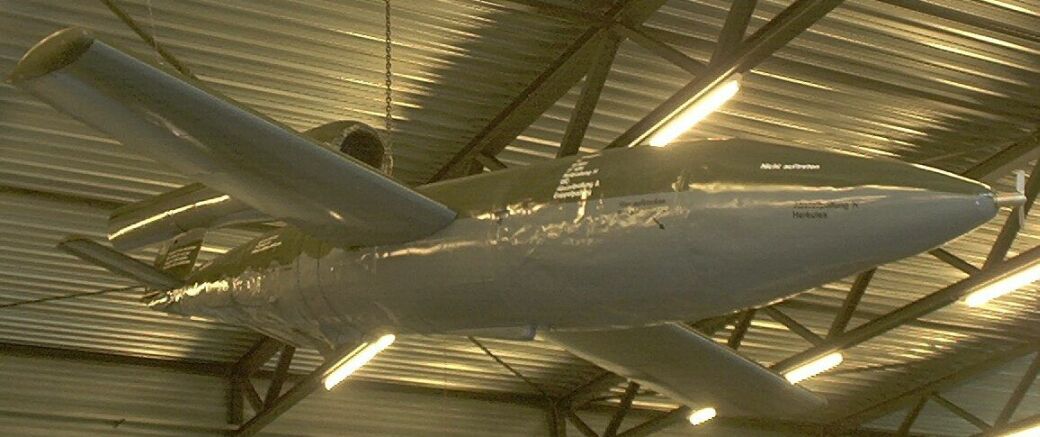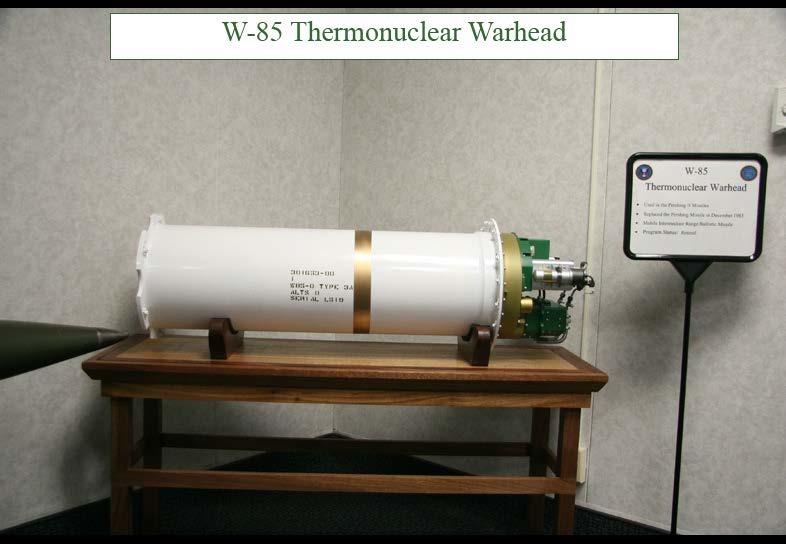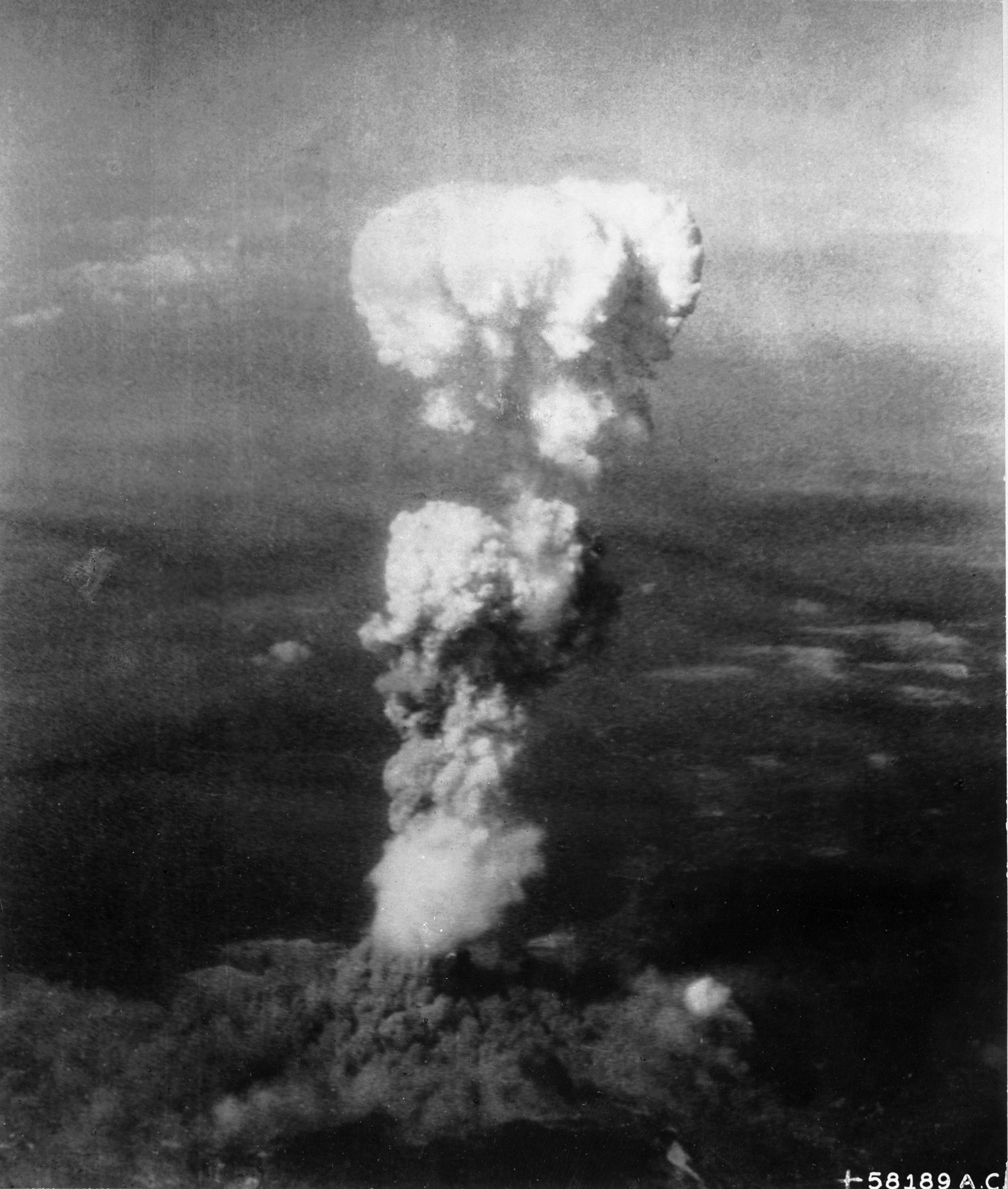|
BGM-109G
The BGM-109G Gryphon ground-launched cruise missile, or GLCM, was a ground-launched variant of the Tomahawk cruise missile developed by the United States Air Force in the last decade of the Cold War and disarmed under the INF Treaty. Overview The BGM-109G was developed as a counter to the mobile MRBM and IRBM nuclear missiles (SS-20 Saber) deployed by the Soviet Union in Eastern Bloc European countries. The GLCM and the U.S. Army's Pershing II may have been the incentives that fostered Soviet willingness to sign the Intermediate-Range Nuclear Forces Treaty (INF treaty), and thus possibly reduced the threat of nuclear wars in Europe. GLCM is also a generic term for any ground-launched cruise missile. Since the U.S. deployed only one modern cruise missile in the tactical role, the GLCM name stuck. The GLCM was built by General Dynamics. History Design and employment A conventionally configured cruise missile, the BGM-109 was essentially a small, pilotless flying machine, powere ... [...More Info...] [...Related Items...] OR: [Wikipedia] [Google] [Baidu] |
Tomahawk (missile Family)
The BGM-109 Tomahawk () Land Attack Missile (TLAM) is an American long-range, all-weather, jet-powered, Subsonic flight, subsonic cruise missile that is primarily used by the United States Navy and Royal Navy in ship and submarine-based land-attack operations. Developed at the Applied Physics Laboratory of Johns Hopkins University under James H. Walker near Laurel, Maryland, the Tomahawk emerged in the 1970s as a modular cruise missile first manufactured by General Dynamics. The Tomahawk aimed to fulfill the need for a medium- to long-range, low-altitude missile with diverse capabilities. Its modular design allows for compatibility with a range of warheads, including high-explosive, submunitions, and bunker-busters. The Tomahawk can use a variety of guidance systems, including Global Positioning System, GPS, Inertial navigation system, inertial navigation, and TERCOM, terrain contour matching. Over a dozen variants and upgraded versions have been developed since the original desi ... [...More Info...] [...Related Items...] OR: [Wikipedia] [Google] [Baidu] |
Tomahawk Cruise Missile
The BGM-109 Tomahawk () Land Attack Missile (TLAM) is an American long-range, all-weather, jet-powered, subsonic cruise missile that is primarily used by the United States Navy and Royal Navy in ship and submarine-based land-attack operations. Developed at the Applied Physics Laboratory of Johns Hopkins University under James H. Walker near Laurel, Maryland, the Tomahawk emerged in the 1970s as a modular cruise missile first manufactured by General Dynamics. The Tomahawk aimed to fulfill the need for a medium- to long-range, low-altitude missile with diverse capabilities. Its modular design allows for compatibility with a range of warheads, including high-explosive, submunitions, and bunker-busters. The Tomahawk can use a variety of guidance systems, including GPS, inertial navigation, and terrain contour matching. Over a dozen variants and upgraded versions have been developed since the original design, including air-, sub-, and ground-launched configurations with both conve ... [...More Info...] [...Related Items...] OR: [Wikipedia] [Google] [Baidu] |
Intermediate-Range Nuclear Forces Treaty
The Intermediate-Range Nuclear Forces Treaty (INF Treaty) was an arms control treaty between the United States and the Soviet Union (and its successor state, the Russia, Russian Federation). President of the United States, US President Ronald Reagan and General Secretary of the Communist Party of the Soviet Union, Soviet General Secretary Mikhail Gorbachev signed the treaty on 8 December 1987. The United States Senate, US Senate approved the treaty on 27 May 1988, and Reagan and Gorbachev ratified it on 1 June 1988. The INF Treaty banned all of the two nations' nuclear and conventional ground-launched ballistic missiles, cruise missiles, and missile launchers with ranges of ("intermediate-range") and ("shorter-range"). The treaty did not apply to air- or sea-launched missiles. By May 1991, the nations had eliminated 2,692 missiles, followed by 10 years of on-site verification inspections. President Donald Trump announced on 20 October 2018 that he was withdrawing the US from th ... [...More Info...] [...Related Items...] OR: [Wikipedia] [Google] [Baidu] |
INF Treaty
The Intermediate-Range Nuclear Forces Treaty (INF Treaty) was an arms control treaty between the United States and the Soviet Union (and its successor state, the Russian Federation). US President Ronald Reagan and Soviet General Secretary Mikhail Gorbachev signed the treaty on 8 December 1987. The US Senate approved the treaty on 27 May 1988, and Reagan and Gorbachev ratified it on 1 June 1988. The INF Treaty banned all of the two nations' nuclear and conventional ground-launched ballistic missiles, cruise missiles, and missile launchers with ranges of ("intermediate-range") and ("shorter-range"). The treaty did not apply to air- or sea-launched missiles. By May 1991, the nations had eliminated 2,692 missiles, followed by 10 years of on-site verification inspections. President Donald Trump announced on 20 October 2018 that he was withdrawing the US from the treaty due to Russian non-compliance, claiming that Russia had breached the treaty by developing and deploying an interm ... [...More Info...] [...Related Items...] OR: [Wikipedia] [Google] [Baidu] |
Cruise Missile
A cruise missile is an unmanned self-propelled guided missile that sustains flight through aerodynamic lift for most of its flight path. Cruise missiles are designed to deliver a large payload over long distances with high precision. Modern cruise missiles are capable of traveling at high Aerodynamics#Incompressible aerodynamics, subsonic, Supersonic speed, supersonic, or Hypersonic speed, hypersonic speeds, are self-navigating, and are able to fly on a non-Ballistics, ballistic, extremely low-altitude trajectory. History The idea of an "aerial torpedo" was shown in the British 1909 film ''The Airship Destroyer'' in which flying torpedoes controlled wirelessly are used to bring down airships bombing London. In 1916, the Americans, American Aircraft pilot, aviator Lawrence Sperry built and patented an "aerial torpedo", the Hewitt-Sperry Automatic Airplane, a small biplane carrying a TNT charge, a Sperry autopilot and barometric altitude control. Inspired by the experiments, the ... [...More Info...] [...Related Items...] OR: [Wikipedia] [Google] [Baidu] |
Pershing II
The Pershing II Weapon System was a solid-fueled two-stage medium-range ballistic missile designed and built by Martin Marietta to replace the Pershing 1a Field Artillery Missile System as the United States Army's primary nuclear-capable theater-level weapon. The U.S. Army replaced the Pershing 1a with the Pershing II Weapon System in 1983, while the German Air Force retained Pershing 1a until all Pershings were eliminated in 1991. The U.S. Army Missile Command (MICOM) managed the development and improvements, while the Field Artillery Branch deployed the systems and developed tactical doctrine. Development Development began in 1973 for an updated Pershing. The Pershing 1a had a 400 kt warhead, which was greatly over-powered for the Quick Reaction Alert (QRA) tactical role the weapon system filled. Reducing warhead yield, however, required a significant increase in accuracy to match Pershing 1a's ability to kill hard targets like command bunkers. The contract went to Ma ... [...More Info...] [...Related Items...] OR: [Wikipedia] [Google] [Baidu] |
SS-20 Saber
The RSD-10 ''Pioneer'' ( tr.: ''raketa sredney dalnosti (RSD) "Pioner"''; ) was an intermediate-range ballistic missile with a nuclear warhead, deployed by the Soviet Union from 1976 to 1988. It carried GRAU designation 15Ж45 (''15Zh45''). Its NATO reporting name was SS-20 Saber. Its deployment was a major cause of NATO's 'Double-Track Decision', which led to the deployment of more medium-range nuclear weapons in Western Europe. The RSD-10 was withdrawn from service under the 1987 Intermediate-Range Nuclear Forces Treaty. Specifications The missile was high, in diameter and weighed 37.1 tons. It was based on two solid-fuel fiberglass clad stages of the RT-21 Temp 2S (SS-16 ''Sinner''), so it was also known as the RT-21M ''Pioneer''. The missile's range was from initially; the final model had a maximum range of possibly . Initially the missile was fitted with a single 1 megaton, 1.6 ton warhead. Later models could take one or two (and from 1980, three) additional 15 ... [...More Info...] [...Related Items...] OR: [Wikipedia] [Google] [Baidu] |
General Dynamics
General Dynamics Corporation (GD) is an American publicly traded aerospace and defense corporation headquartered in Reston, Virginia. As of 2020, it was the fifth largest defense contractor in the world by arms sales and fifth largest in the United States by total sales. The company is a ''Fortune'' 100 company and was ranked in 2022. Formed in 1952 with the merger of submarine manufacturer Electric Boat and aircraft manufacturer Canadair, the corporation today consists of ten subsidiary companies with operations in 45 countries. The company's products include Gulfstream business jets, and nuclear-powered submarines, guided-missile destroyers, M1 Abrams tanks, and Stryker armored fighting vehicles. In 2024, General Dynamics had worldwide sales of $47.7 billion and a workforce of approximately 117,000 full-time employees. The current chairman and chief executive officer (CEO) is Phebe Novakovic. History Electric Boat General Dynamics traces its ancestry to John Philip ... [...More Info...] [...Related Items...] OR: [Wikipedia] [Google] [Baidu] |
W80 (nuclear Warhead)
The W80 is a low to intermediate yield two-stage thermonuclear warhead deployed by the U.S. enduring stockpile with a variable yield ("dial-a-yield") of . It was designed for deployment on cruise missiles and is the warhead used in all nuclear-armed AGM-86 Air-Launched Cruise Missile (ALCM) and AGM-129 Advanced Cruise Missile (ACM) missiles deployed by the US Air Force, and in the US Navy's BGM-109 Tomahawk. It is essentially a modification of the widely deployed B61 weapon, which forms the basis of most of the current US stockpile of nuclear gravity bombs. The very similar W84 warhead was deployed on the retired BGM-109G Ground Launched Cruise Missile. It was designed at Los Alamos National Laboratory in Los Alamos, New Mexico. Dimensions The W80 is physically quite small: the physics package itself is about the size of a conventional Mk.81 bomb, in diameter and long, and only slightly heavier at about . History Early development The Los Alamos National Labor ... [...More Info...] [...Related Items...] OR: [Wikipedia] [Google] [Baidu] |
Transporter Erector Launcher
A transporter erector launcher (TEL) is a missile vehicle with an integrated tractor unit that can transport, elevate to a firing position and launch one or more rockets or missiles. History Such vehicles exist for both surface-to-air missiles and surface-to-surface missiles. Early on, such missiles were launched from fixed sites and had to be loaded onto trucks for transport, making them more vulnerable to attack, since once they were spotted by the enemy they could not easily be relocated, and if they were it often took hours or even days to prepare them for launch once they reached their new site. Usually a number of TELs and TELARs are linked to one command post vehicle (CP or CPV). They may use target information from target acquisition, designation and guidance radar (TADAGR or TAR). Transporter erector launcher and radar (TELAR) A transporter erector launcher and radar (TELAR) is a type of TEL that also incorporates part or all of the radar system necessary for firi ... [...More Info...] [...Related Items...] OR: [Wikipedia] [Google] [Baidu] |
Nuclear War
Nuclear warfare, also known as atomic warfare, is a War, military conflict or prepared Policy, political strategy that deploys nuclear weaponry. Nuclear weapons are Weapon of mass destruction, weapons of mass destruction; in contrast to conventional warfare, nuclear warfare can produce destruction in a much shorter time and can have a long-lasting radiological warfare, radiological result. A major nuclear exchange would likely have long-term effects, primarily from the Nuclear fallout, fallout released, and could also lead to secondary effects, such as "nuclear winter", nuclear famine, and societal collapse. A global thermonuclear war with Cold War-era stockpiles, or even with the current smaller stockpiles, may lead to various scenarios including human extinction. To date, the only use of nuclear weapons in armed conflict occurred in 1945 with the American atomic bombings of Hiroshima and Nagasaki. On August 6, 1945, a uranium Nuclear weapon design, gun-type device (code name ... [...More Info...] [...Related Items...] OR: [Wikipedia] [Google] [Baidu] |








